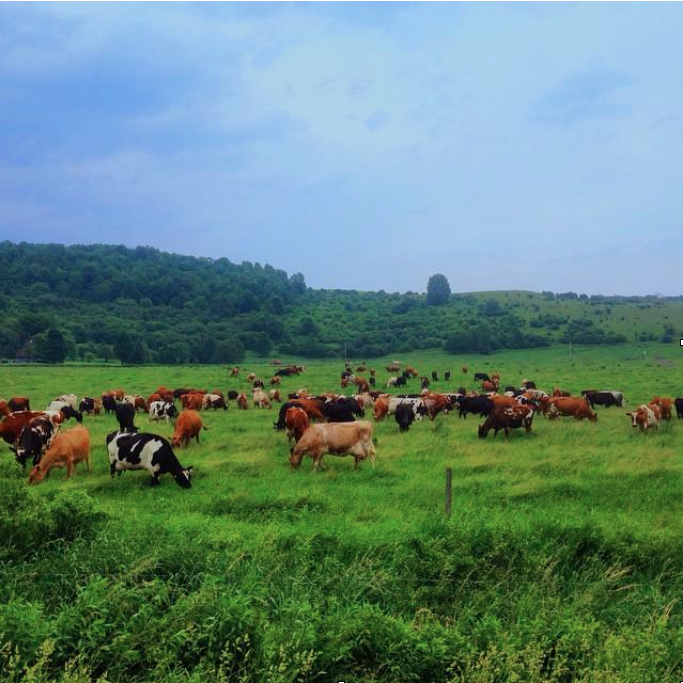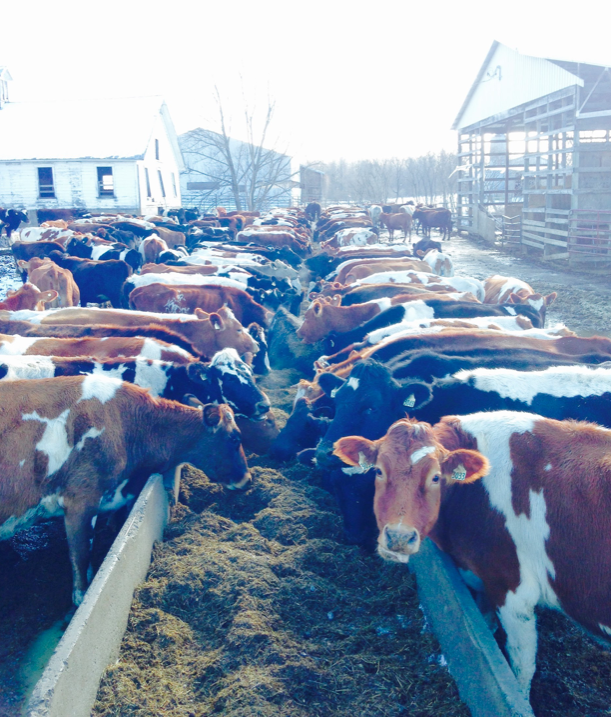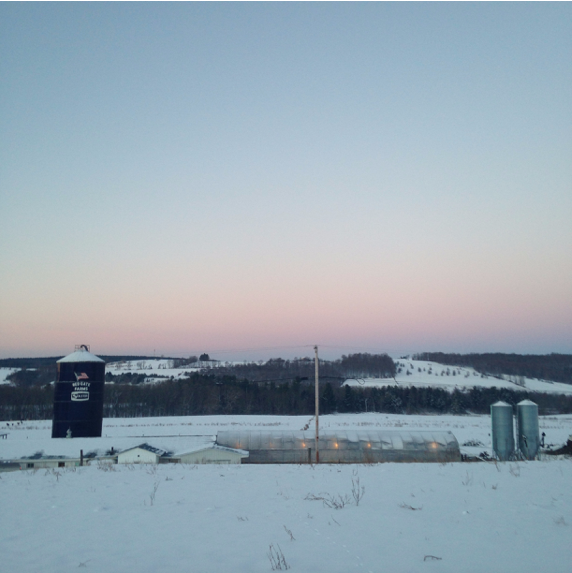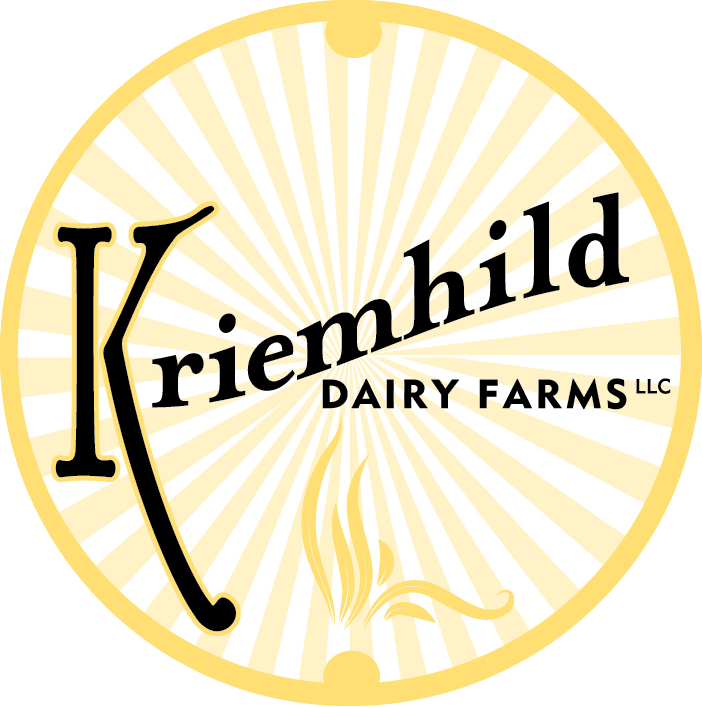Why no Butter?You may have recently found yourself asking this when at a local Farmer’s Market or a Kriemhild Dairy retail partner. We’re willing to bet this question has come to mind in a few of you because we’ve certainly been fielding a good many inquiries about our current Meadow Butter “shortage.” <--finger quotes implied Our quick answer when asked is simply that our sole supplier for our Meadow Butter source milk, Red Gate Farm, is a seasonal dairy farm. Unlike farms that implement rotational breeding, Red Gate chooses to breed their cows together to follow nature’s rhythm of pasture grass growth. This choice means that the moms-to-be have been dried-off (a.k.a. not-milking during the final months of pregnancy) since December, and by extension, we do not yet have milk to make your favorite butter. Although this short explanation gets the general point across, we would like to dig deeper on what commitment to being a seasonal farm really means: a holistic farm management choice that is far more subtle and intricate than just the result of a perceived butter-famine in the dead of every winter. Milk, like all other food, has a season; not that many of us realize that nowadays. Before the introduction of grain feeding practices, farmers were keen to match a cow’s peak milk production to pasture quantity and quality. This meant breeding in the fall, and calving around March and April. This schedule closely mimics nature, as most wild grazing animals give birth in the spring when there is high food availability as they nurse their growing offspring. A seasonal dairy is different from a year-round dairy in that all the cows are on the same breeding and birthing schedule. This results in the whole herd going dry for the same two month period in the winter to save up energy for birthing in the spring. On a year-round dairy, each cow still dries off for two months, but since the breeding and calving periods are staggered, different groups of cows go dry at separate times of the year, giving the illusion of seasonless food production. Many year-round dairy farms find that grain or corn silage (a fermented feed made from corn stalks) work best in order to meet the cows’ high nutrient requirements during the winter milking. High quality stored pasture feeds like hay and hay ferment (haylage) can also meet winter production nutrition needs. Seasonal management lessens the reliance on grain, corn products, and stored forages. The Rivington family have been managing their herd seasonally since 2005, only a few years after starting Red Gate Farm in Hamilton, NY. They chose to manage the farm seasonally for a few reasons. Firstly, because of their commitment to grass-fed farm management, organizing their herd’s reproductive cycles around the the grazing season made practical sense; their cows are able graze on fresh, nutritions pasture when their nutrient requirements are the highest (during lactation), and then can maintain their body condition on stored forages throughout the winter when they are not milking and therefore have lower nutritional needs. Another logistic factor that complemented seasonal production was their selection of an open-air milking parlor design. Red Gate Farm’s milking parlor is bright and breezy in the summer, providing ample ventilation (and vitamin D) for both bovines & humans during milking times. By extension, given the climate of Upstate NY, this design doesn’t necessarily lend itself to the most comfortable temperatures for humans or cows during the winter. Drying off the herd for two of the colder months of the year, again, works with nature and limits this issue. In addition to providing their cows with the best nutrition, eliminating their need for grain, and compensating for their limited infrastructure, the final major factor supporting seasonally dairying is a human one: it offers the Rivington family a break from the twice-a-day (and sometimes thrice-a-day) milking for two months. With their daily farm work hours reduced from time-and-a-half down to part-time, the Rivington family can sleep full nights, have weekends off, reflect on the season, plan for the future, and most importantly recharge before going back at it for another 10 months straight.
In spite of these benefits, do not be deceived! Seasonal dairying is not all sunshine and blowing bubbles in your milk. The trade off for the two-month break during the winter is two epicly intense periods of breeding and calving. In order to dry off the whole herd at the same time, more the 300 cows must breed, conceive, and calve on a tight schedule. These two narrow windows of time leave very little room for mistakes, and only raise the stakes for this family farm. In order to increase the chances of having the herd bred within the same 60 day time span, all the cows must be at the pinnacle of health; wellness begets fertility. Nine months later, calving season consumes the daily and nightly, activities as the increasing number of calves need to be tagged, moved, and fed. This frantic pace can reach the extreme of one calf being born every hour. Although the breeding and calving periods are, shall we say intense, seasonal farming allows the Rivingtons to keep the pregnant cows’ and newborn calves’ wellbeing at the forefront of their focus and attention. Since Meadow Butter stores well in the freezer with no effects to its quality or nutrition, we intend to supply it to you throughout the winter as we grow our production and when we bring on more dairy farmers as Kriemhild partners. But even then, our butter, like a meadow, will still be produced seasonally, and remains a seasonal product. So, you see, the “shortage” (finger quotes again) isn’t really a shortage, but a natural ebb between swells of abundance. We feel that highlighting this connection between the foods we love and the seasons of nature is essential to understanding what it means to be well nourished.
3 Comments
5/16/2017 10:02:52 am
Fascinating blog post....thanks for explaining a seasonal dairy.
Reply
6/30/2023 09:37:59 am
The information you have shared in this article provides valuable insights into the realities of seasonal dairying and the efforts made to ensure the well-being of the animals and the connection between our food and the natural world. It's a reminder that sustainable practices and a deeper understanding of the food we consume are crucial for our overall nourishment. Thanks for sharing your valuable insights with us!
Reply
Leave a Reply. |
As the Butter Churns
Author: Ellen Fagan and Victoria PeilaCategories
All
Archives
November 2019
|
Where our HEart is
|
FOLLOW US |
what our customers are saying"Thank you! Even though I'm 5 hours away...I can't live without you. Got my shipment today.
#kriemhildbutterlove" -- Jennifer in Mystic, Connecticut |
Copyright 2020 © Kriemhild Dairy Farms, LLC





 RSS Feed
RSS Feed